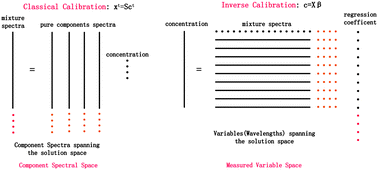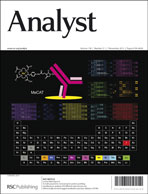A perspective demonstration on the importance of variable selection in inverse calibration for complex analytical systems
Abstract
Classical calibration and inverse calibration are two kinds of multivariate calibration in chemical modeling. They use strategies of modeling in component spectral space and in measured variable space, respectively. However, the intrinsic difference between these two calibration models is not fully investigated. Besides, in the case of complex analytical systems, the net analyte signal (NAS) cannot be well defined in inverse calibration due to the existence of uninformative and/or interfering variables. Therefore, application of the NAS cannot improve the predictive performance for this kind of calibration, since it is essentially a technique based on the full-spectrum. From our perspective, variable selection can significantly improve the predictive performance through removing uninformative and/or interfering variables. Although the need for variable selection in the inverse calibration model has already been experimentally demonstrated, it has not aroused so much attention. In this study, we first clarify the intrinsic difference between these two calibration models and then use a new perspective to intrinsically prove the importance of variable selection in the inverse calibration model for complex analytical systems. In addition, we have experimentally validated our viewpoint through the use of one UV dataset and two generated near infrared (NIR) datasets.


 Please wait while we load your content...
Please wait while we load your content...